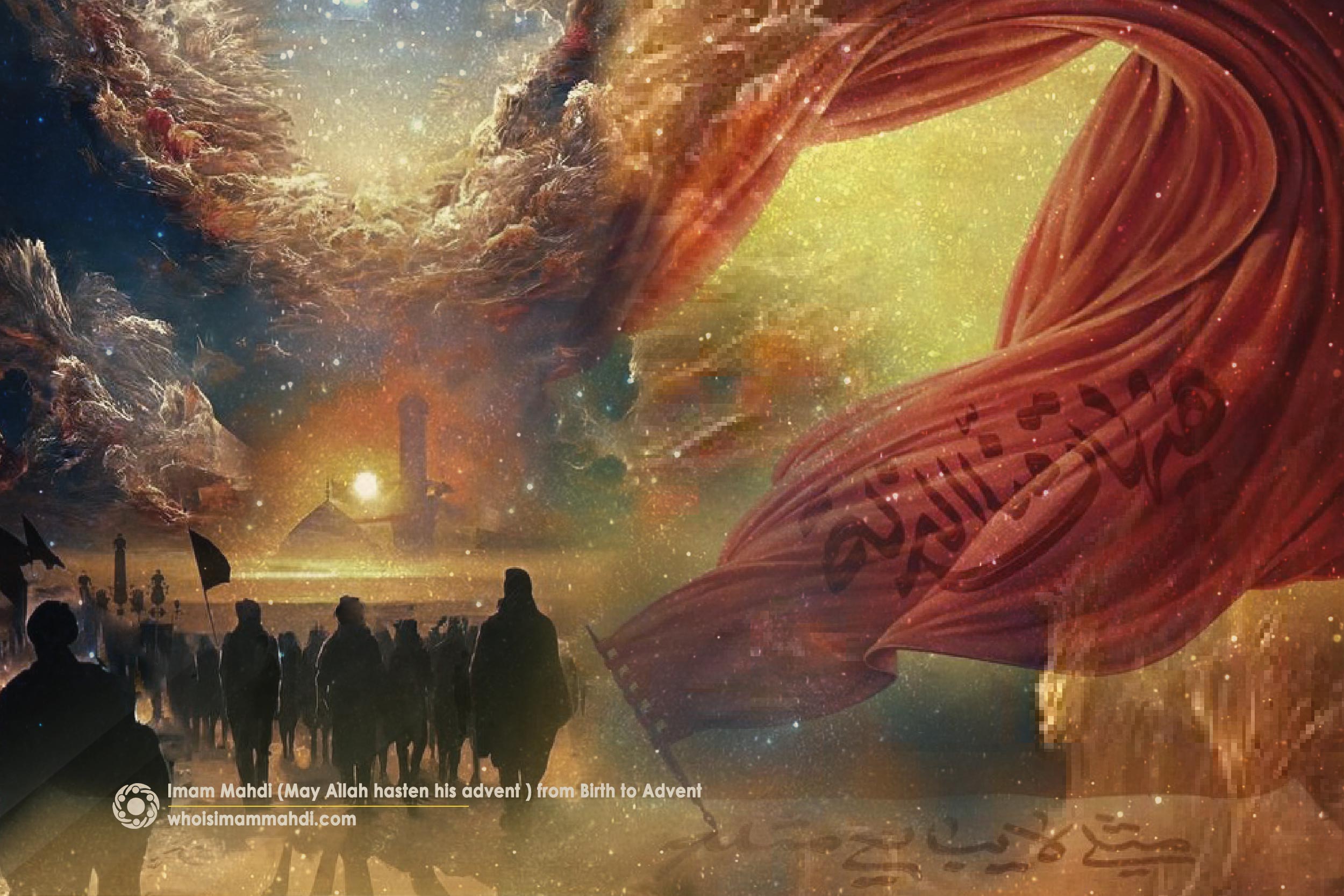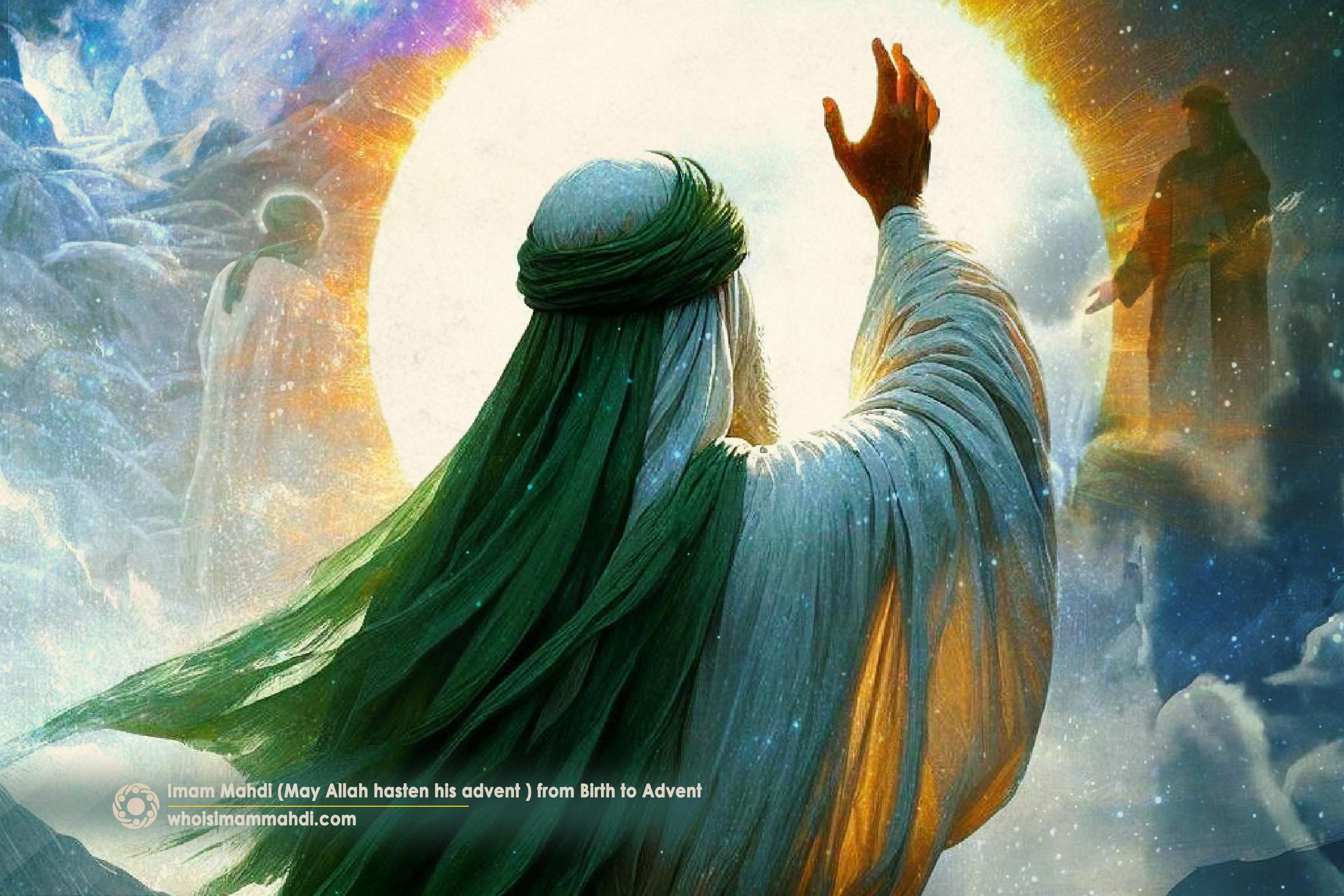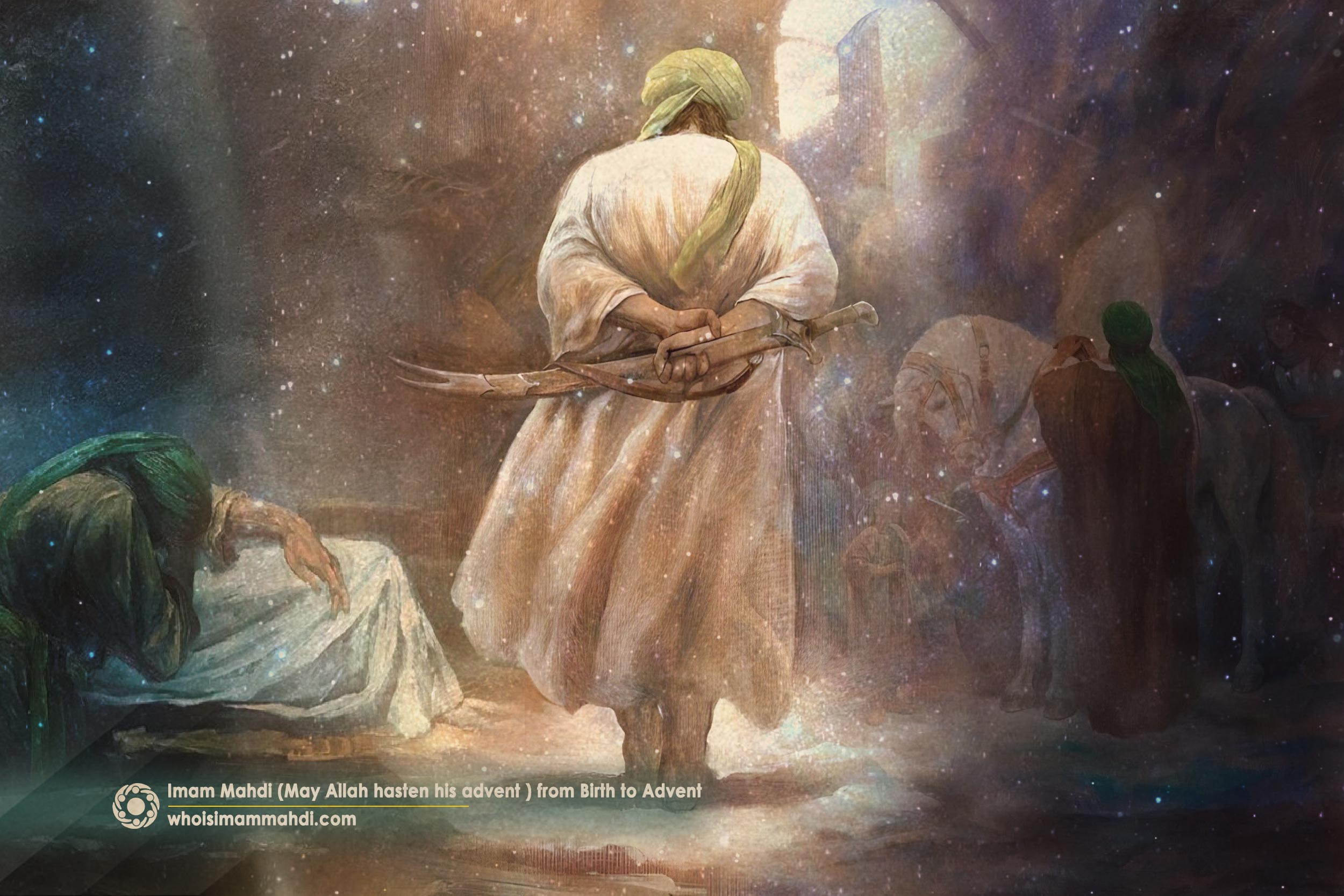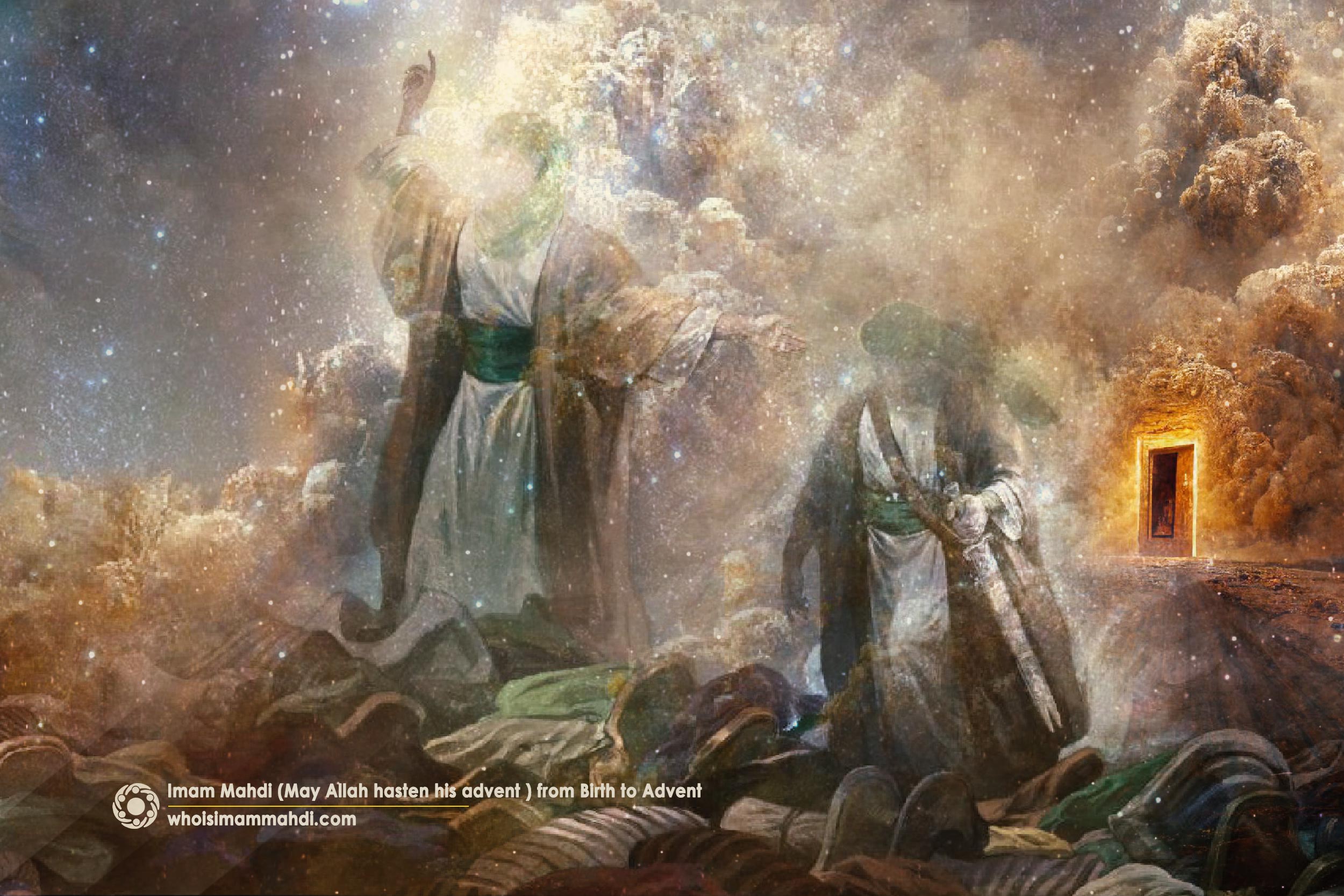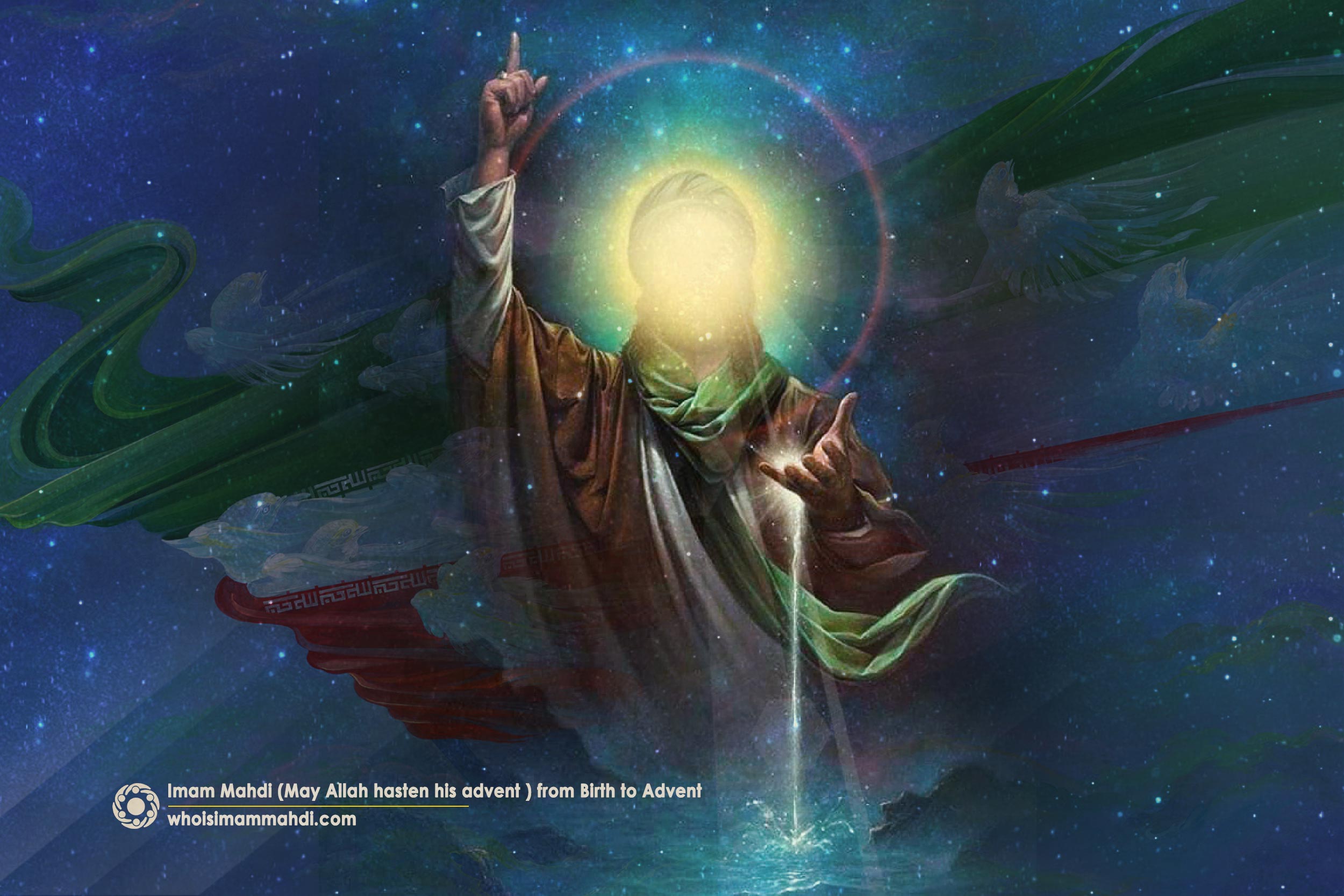Examining the Reasons Behind the Ashura Uprising and Imam Hussain’s (PBUH) Refusal to Stay Silent Against the Umayyads
The event of Ashura took place on the 10th of Muharram in the year 61 AH. Imam Hussain (PBUH) and his 72 companions[1] fought against Yazid‘s army of 30,000[2] in a region called Karbala, near the Euphrates River, about 100 Km southwest of present-day Baghdad. Although, on the surface, the event led to the martyrdom of Imam Hussain (PBUH) and his companions, and the captivity of his family, in the end, it resulted in the preservation of Islam and the exposure of the true nature of the Umayyad Dynasty.
A brief look at Islamic history reveals that the event of Ashura of 61 AH draws more attention than any other event and deeply engages the hearts of people. At the time of Ashura, Islam had not long been established since the Prophet’s mission; the fact that the family and grandson of the Prophet were beheaded and captured by Muslims who had embraced Islam for less than fifty years prior under the Prophet’s own guidance is an unprecedented event which indicates a profound deviation within the Islamic community. The battle of Ashura did not take place between two leaders or two tribes. It was a conflict of truth versus falsehood, justice versus injustice, dignity against disgrace. This is the essence of Ashura.[3]
In reality, Ashura was the product of people’s betrayal to Ghadir (where Imam Ali’s leadership was declared) and their abandonment of the allegiance to Imam Ali (PBUH), leading to the resurgence of old grievances and tribal values. Those who, before Ashura, were concerned with their lineage, wealth, and tribe in competition with the Quraysh and Banu Hashim sought revenge in this event for their losses at battles like Badr, Uhud, and Hunayn.
The ten-year governance of the Prophet in Medina was not enough to fully establish Islamic values among the Arabs, who had been deeply immersed in tribal and ethnic customs for centuries. After the Prophet’s passing (PBUH), when the people turned away from Allah’s deputy (on earth) and the infallible expert appointed by Him and His Prophet, a 25-year gap occurred in the leadership of the infallible expert over the people. This gap was not restored even during the short leadership of Imam Ali (PBUH) and the fluctuating period of Imam Hassan’s (PBUH) leadership. During Imam Hussain’s (PBUH) time, aside from a few loyal companions, most people did not follow him for truth or spiritual growth; rather, their main criteria for loyalty were tribal connections or the pursuit of wealth and status. They lacked an understanding of the concepts of guardianship (wilayah),[4] leadership (Imamate), and the establishment of an Islamic civilization, which are essential for achieving the purpose of human creation.
Generally, when we speak of the human being, all principles, decisions, and choices revolve around his bliss and guidance. Ashura is the critical moment where a deviation occurs in a religion tasked with leading humanity to bliss. Only by understanding the importance of human bliss and the path toward its fulfillment can we comprehend the choices made by Imam Hussain (PBUH); indeed, the event of Ashura is Imam Hussain’s battle against ignorance, humiliation, and misery of humanity. In a situation where Satan has continually sought to divert us from the Straight Path, Imam’s role is to guide us back to the Straight Path that ultimately leads to similarity to Allah, even if this path demands a heavy price, including Imam’s martyrdom and the captivity of his family. The tragedy that befell the family of the Prophet in Karbala was unprecedented, neither occurring before nor repeating afterward. Understanding the factors that led to this deviation and drove Imam Hussain (PBUH) toward the decision for the uprising of Ashura is the subject that will be addressed in this article.
Factors Leading to the Event of Ashura
During Prophet’s (PBUH) lifetime in Medina, he laid the foundation for an Islamic government and an ideal divine society. However, ten years was not enough to solidify these ideals or to change beliefs and customs that had been deeply ingrained in people since the Age of Ignorance. Additionally, some individuals who had been compelled to convert to Islam after the conquest of Mecca and adapt to the conditions of an Islamic society were unfamiliar with or even harbored resentment in their hearts toward the ideals and goals of Islam and the Prophet (PBUH). This gap gradually widened as society grew more distant from the guidance of an infallible expert, reaching its peak by the end of Imam Hussain’s (PBUH) Imamate.
The movement that led to the event of Ashura was, in fact, the outcome of actions by two groups of people: the elites, who possessed analytical power, understanding, and discernment, and the masses, who lacked insight, did not pursue any specific aim, and whose actions were shaped by the responses and behaviors of the elite. Furthermore, the elite themselves were divided into those inclined toward righteousness and those inclined toward falsehood.[5] Since the positions of the elites inclined toward falsehood are clear, what is significant in this event is the level of activism or lack of on-time reactions of the righteous elite, which were often influenced by the factors we will address below:
–Worldliness
After the passing of the Prophet (PBUH) and the subsequent expansions and victories of the Islamic government, many of the elites in the Islamic community gradually distanced themselves from the true spirit of Islam. Drawn to worldly gains, they found it increasingly difficult to let go of material attractions. This shift went so far that, except for a small few, most elites preferred a life of position, desire, wealth, pleasure, and comfort over supporting the Imam. They were unwilling to give up worldly benefits when faced with the duty and tests of faith, ultimately choosing to align with tyrannical rulers like the Umayyads. Out of fear for their lives, the possibility of isolation, and the loss of rank—which they once viewed as a means to gain closeness to God—they showed no resistance to the unjust authority, and in the end, contributed to the martyrdom and removal of the infallible expert. In reality, over the course of these fifty years, the servitude, knowledge, justice, and affection that the Prophet had established within the Islamic community transformed,[6] giving way to indolence, worldliness,[7] and the pursuit of power.
As a result, from a city like Kufa, where 18,000 people had pledged allegiance to the Imam’s representative, Moslim ibn Aqeel,[8] many were coerced, threatened, or enticed to march to Karbala to fight against the Imam.
–Lack of Situational Awareness
Historical experiences confirm that not only the stance of elites is important at any given time, but their prompt and appropriate actions can also be crucial in either saving or misleading a community. For instance, if the elites had taken a rightful stance in supporting Moslim ibn Aqil or if the Tawwabin[9] had acted promptly in aiding the Imam, they could have significantly altered the events of Ashura and perhaps even prevented the killing of the infallible expert. This means the very actions that did not take place due to fear, weakness, ignorance, worldly desires, or a mere desire for survival in some elites.[10]
–Failure in Proper Recognition
At the same time, some people, due to an inability to perceive the social and historical context of their time, failed to discern their duties accurately and lost sight of their true adversary. In other words, they confused their primary responsibilities with less important tasks, resulting in a lack of proper support for the infallible expert. Consequently, they contributed to depriving millions of people of the guidance of the infallible expert over centuries. Sometimes, individuals have no problem to discern the truth; figures like Omar ibn Sa’d, for example, had no doubts about the Imam’s status. Yet, because they have chosen a different lifestyle, they lacked the power and capability to support the righteous. In fact, when we lack a proper understanding of ourselves and the true value of our human identity, we lose the ability to accurately interpret history and grasp the political and social conditions of our time.
–The alteration of values
Perhaps, one of the most significant factors that paved the way for the event of Karbala was the shift in societal values. The piety that once served as the criterion for individual superiority during the Prophet’s era had been replaced by materialism and lust-driven priorities in this period.[11] Islam’s ultimate goal was to change false values like deceit, lying, worldliness, and attachment—which are the tools of oppressive and tyrannical regimes—and replace them with compassion, bravery, brotherhood, sacrifice, and selflessness. However, living under the rule of tyrannical governments distorted people’s values and embellished false standards in their opinion.
Thus, the focus on material aspects, the dominance of lower desires, errors in understanding the righteous path, and the failure to act promptly to support the truth led to the Imam’s isolation and paved the way for the unchecked dominance of the oppressive regime.
–The Right Time for the Uprising
Why didn’t Imam Hussain (PBUH), who intended to fight the corrupt rule of the Umayyad Dynasty, initiate his uprising sooner? What characteristics of Muawiyah’s government made it an unsuitable time for Imam to rise up and act against the oppressive rule? What factor led Imam Hussain (PBUH) to maintain silence and patience for nearly ten years under Muawiyah’s rule, yet prompted him to rise against Yazid’s government?
The answer to these questions lies in the contrasting personalities and ruling styles of Yazid and Muawiyah. Although Imam Hussain’s uprising occurred during the Umayyad era, there was a significant difference between Muawiyah’s government and Yazid’s.
Firstly, during his rule, Muawiyah did display a good image of himself; he appeared to adhere to religious commands and maintained a covert opposition to Islam rather than an open one. He portrayed himself as a companion of the Prophet (PBUH) and a scribe of the Quran, but in reality, he followed a different demeanor and approach. For this reason, Ibn Abi al-Hadid, in his writings, describes Muawiyah as a corrupt, deceitful, and cunning politician, who misled people through hypocrisy and presented his desires in a way that deceived people.[12]
Muawiyah’s hypocritical behavior, especially in Sham (Syria), led people to consider him a religious authority, or even as the caliph and successor to the Prophet (PBUH). People came to understand Islam through Muawiyah. On the other hand, Yazid openly displayed corruption, indulgence in alcohol, and fisq (straying from the right path), which caused him to lose his social status among Muslims.[13] He tried to control the Muslim community through acts of intimidation and terror, which were notably seen during the event of Ashura in 61 AH and the battle of Harrah in 63 AH (683 C.E.).
After Muawiyah, a person came to power who had no regard even for the outward aspects of Islam and had no interest in them. Since Yazid, a fasiq, was at the top of society, his actions had a profound impact on the community, drawing others into the same attitude. Yazid effectively transformed the social structure of the Islamic world into a non-Islamic system. While the aim of the Prophet was to establish an Islamic system and governance[14] that would guarantee the bliss and salvation of humanity in both this life and the hereafter, Yazid’s actions led people in the opposite direction. He was destroying Islamic values, thereby diverting people from the straight path and the purpose of their creation.
In such a situation, given this manifest deviation, it was imperative for Imam Hussain (PBUH) to rise. An uprising should occur not only when deviation arises but also when there is an appropriate opportunity to react.[15] As the grandson of the Prophet (PBUH), Imam Hussain (PBUH) held the highest qualification to restore the Islamic society to its original state and fulfill this role. Furthermore, he saw the timing as appropriate for an uprising.[16]
Uprising: A Path to Save Islam
Imam Hussain (PBUH) started his uprising at a critical moment when Islam faced the dual threats of external enemies and internal disintegration.
-The external enemy targeted the very existence of Islam, aiming to undermine its laws. This included the corrupt Umayyad Caliphate and those worldly figures affiliated with it, who misused Islamic power to move against the goals and principles established by the Prophet (PBUH). After Islam had eradicated aristocracy, these rulers, who claimed to be the Prophet’s successors, openly adopted the behaviors of Persian and Roman emperors, steering society toward worldliness and lust.[17]
-On the other hand, there was also the internal threat posed by those who, due to reasons like weariness, failure to discern the right path, dominance of lower desires, or inclination toward worldly aspects, were unintentionally drifting toward the internal corruption established by the ruling authority. Consciously or unconsciously, they moved away from the ideals of Islam and a true Islamic government.[18]
The Ashura uprising thus became both a fight against an external enemy and a profound struggle against internal lower desires. Imam Hussain (PBUH) not only confronted those attempting to eradicate the principles and objectives of the Islamic civilization but also challenged the ease and corruption that had spread among ordinary Muslims. This struggle would either pave the way for Imam’s rule or lead to his martyrdom,[19] both of which were seen as victories, as they would revive the values of the Islam brought by the Prophet[20] and provide an ever-lasting standard for opposing oppressive and tyrannical governments.
The Ashura Uprising
After Muawiyah’s death, conditions changed dramatically for Imam Hussain (PBUH), the only surviving son of Lady Fatimah (PBUH). Due to political considerations and his public image, Muawiyah had avoided direct confrontation with Imam Hussain (PBUH) and even advised his son Yazid to do the same. However, lacking Muawiyah’s wisdom and diplomacy, Yazid openly confronted the Prophet’s grandson, demanding allegiance from him, a move that ultimately hastened the fall of his dynasty. Consequently, the governor of Medina, Walid ibn Utbah,[21] along with Marwan ibn Hakam, tried to obtain allegiance from the Imam on Yazid’s behalf. Imam delayed his response, instead requesting that any pledge must be made in public; he gave a key response to Yazid’s representatives which set a timeless standard for defiance against tyrants for all people: “Someone like me does not pledge allegiance to someone like him.”[22]
Imam’s refusal[23] to pledge allegiance to Yazid led to his covert departure from Medina to Mecca at night. In his will to his brother, Muhammad ibn Hanafiyyah, he clarified that his actions were not driven by lower desires or selfish motives, nor did he intend to disrupt the Muslim community. Rather, he rose for the purpose of enjoining good, forbidding wrong, and reforming his grandfather’s community.[24] Imam Hussain (PBUH) intended to spark a profound revolution in society.
When the Imam left Medina, the leaders of Kufa wrote to him, urging him to take up the governance of Kufa and Iraq and to unite the people on the path of truth.[25] In response to this request and the clear desire of people, the Imam saw it as his duty to send his representative, Muslim ibn Aqil, to Kufa. Initially, the people of Kufa welcomed Muslim ibn Aqil warmly, with 18,000 pledging allegiance to him. This pledge prompted Muslim ibn Aqil to write to the Imam, informing him of the people of Kufa’s readiness to accept his leadership.
The Imam, who at that time was observing the Hajj and saw his presence at Kaaba as a safeguard for his own and his family’s safety, faced threats from the governor of Mecca. Concerned that his blood might be shed in silence and that the sanctity of Kaaba be violated, he felt compelled to take another course of action. After receiving the letter of support from the people of Kufa, on the 8th of Dhu al-Hijjah in the year 60 AH, he left Mecca and set out for Kufa.[26]
However, this invitation did not last long. With the arrival of Ibn Ziyad in Kufa, the situation took a drastic turn as he exerted pressure and issued threats. Except for a few, the people of Kufa broke their allegiance to the Imam out of fear for their lives, their families, and their property. Under the influence of fear, threat, and lack of understanding their duty, they abandoned the Imam’s representative, leading to his eventual martyrdom.
While on his way to Kufa, Imam received news at a place called Zarud about the breaking of the pledges and the martyrdom of Muslim ibn Aqil by Ubayd Allah ibn Ziyad’s (Yazid’s agent, known for violence) forces.[27] Although the news of the deaths of Muslim and Hani indicated unrest in Kufa, Imam had not officially received any letter renouncing the support of the people of Kufa and was also facing threats from Amr ibn Sa’id ibn al-As, the governor of Mecca. Therefore, he continued on his path to fulfill his responsibility to the people of Kufa.
Ibn Ziyad, fearing that the Imam’s arrival in Kufa would incite the people, not only blocked his entry into the city but also prevented his return to Mecca. To ensure this, he sent Hur ibn Yazid al-Riyahi[28] with a thousand horsemen to confront Imam Hussain (PBUH).[29] Hur followed and monitored the Imam’s movements until they reached a place called Karbala.
From the moment he refused to pledge allegiance to Yazid until the Day of Ashura, the Imam’s journey took 175 days: twelve days in Medina, four months and ten days in Mecca, twenty-three days on the path from Mecca to Karbala, and eight days in Karbala itself. Accompanied by his family, the Imam traveled through eighteen manzils (place of rest for travelers), covering approximately 430 kilometers from Mecca to Kufa. Due to Hur’s army’s blockade, preventing the Imam from reaching Kufa, he ultimately arrived in Karbala on the 2nd of Muharram in the year 61 AH.
The Event of Ashura: A Test of Devotion to the Imamate and Guardianship of the Imam
The Imam is a nurturer and a center of God’s mercy. Throughout his journey toward Kufa and Karbala, Imam Hussain (PBUH) sought to bring people to the Straight Path. This path, which begins with accompanying the Imam, ultimately leads to spiritual elevation, reaching the praiseworthy status alongside him. However, loyalty to the Imam and devotion to his leadership was not an easy test; as the days passed and the 10th of Muharram, which is Ashura approached, the trials grew increasingly challenging. Enduring the siege by thousands of enemy forces, the blockade of water, the mounting thirst starting from the 7th day of Muharram, and the journey that led to martyrdom were possible only for those who had previously managed to have a proper relationship with God, freed themselves from lower desires, and were adorned with discipline, loyalty, and devotion to the Imam. Such individuals were prepared for the Imam’s guidance.
Loyalty to the Imam is rooted in recognizing his lofty status—both as the highest reflection of divine names and attributes and as a pure, infallible expert who is capable of elevating people toward similarity to God. This level of insight was found in only a handful of people from Kufa, such as Hani, Habib, and Muslim ibn Awsaja, as well as those who managed to join the Imam’s army in any way they could. On the Day of Ashura, the Imam’s companions numbered, according to the most well-known reports, only 72,[30] with seventeen being from the Imam’s family and the youth of Bani Hashim.[31]
The Ashura uprising, as an event that embodies both intellect and passion, provides an unparalleled lesson in history. The reason for the lasting impact of this Shia movement lies in its fusion of logic and emotion.[32] Ashura is a phenomenon involving martyrs and captives from diverse backgrounds, enabling it to resonate with people of all ages, genders, and positions. In fact, Ashura stands as a model for resisting oppression and corruption, and it illustrates loyalty to the Imam and adherence to his leadership in various dimensions. It clearly defines our responsibilities, both in our relationship with the Imam and divine expert, and in confronting tyranny and unjust rule.
Reference
[1]. Ibn Kathir, al-Bidaya wa l-Nihaya, vol. 8, p. 205, (Arabic).
[2] . Sheikh Al-Saduq, Amali, p. 177 (Arabic).
[3] . Sayyid Mustafa al-Qazvini, For Resolution to Revolution, the Message of Ashura, Costa Mesa, USA, Islamic Educational Center of Orange Country, 2011.
[4] . Ayatullah Khamenei, Wilayat (Guardianship), Sayyid Saeed Haider Kazmi, Karachi, Darus Saqalain, 2007.
[5] . Ayatullah Khamenei, A 250 Years Old Person, 3rd cycle, Tehran, Sahba, 2019, p. 521-524 (Persian).
[6] . Ibid., p. 509
[7] . Ibid., p. 500
[8] . Dinawari, al-Akhbar al-Tiwal, 1911, p. 235, (Arabic).
[9] . Ian Keith Anderson Howard, The Tawwabin: The Repenters, Muhammad Trust of Great Britain and Northern Ireland, vol. 4, No. 1.
[10] . Ayatullah Khamenei, A 250 Years Old Person, 3rd cycle, p. 527-529.
[11] . Ibid., p. 501
[12] . Ibn Abil-Hadid, Commentary on the Nahj al-Balagha, vol. 3, p. 82, (Arabic).
[13] . Ayatullah Khamenei, A 250 Years Old Person, 3rd cycle, p. 445.
[14] . Ibid., p. 552.
[15] . Ibid., 2nd cycle, p. 177
[16] . Ibid., 3rd cycle, p. 460
[17] . Ibid., 2nd cycle, p. 211
[18] . Ibid., p. 165-167
[19] . Ibid., p. 172
[20] . Ibid., p. 182
[21] . Ibid., 3rd cycle, p. 447
[22] . Muhammad Baqir Majlisi, Bihar al-Anwar, v. 44, p. 325 (Arabic).
[23] . Dr. Ibrahim Ayati, A Probe into the History of Ashura, Karachi, Islamic Seminary Publications, chapter 10 (Urdu).
[24] . Ayatullah Khamenei, A 250 Years Old Person, 3rd cycle, p. 449-452.
[25] . Ibid., p. 452.
[26] . Tabari, History of Tabari, v. 5, p. 381 (Arabic).
[27] . Sheikh Mufid, al-Irshad, v. 2, p. 73-74 (Arabic).
[28] . Dr. Ibrahim Ayati, A Probe into the History of Ashura, chapter 14.
[29] . Ayatullah Khamenei, A 250 Years Old Person, 3rd cycle, p. 458.
[30] . Ibn al-Athir, al-Kamil fi al-Tarikh, v. 5, p. 59 (Arabic).
[31] . Al-Saduq, Kamal al-Din wa Tamam al-Nima, 1975, p. 533 (Arabic).
[32] . Ayatullah Khamenei, A 250 Years Old Person, 3rd cycle, p. 564.

